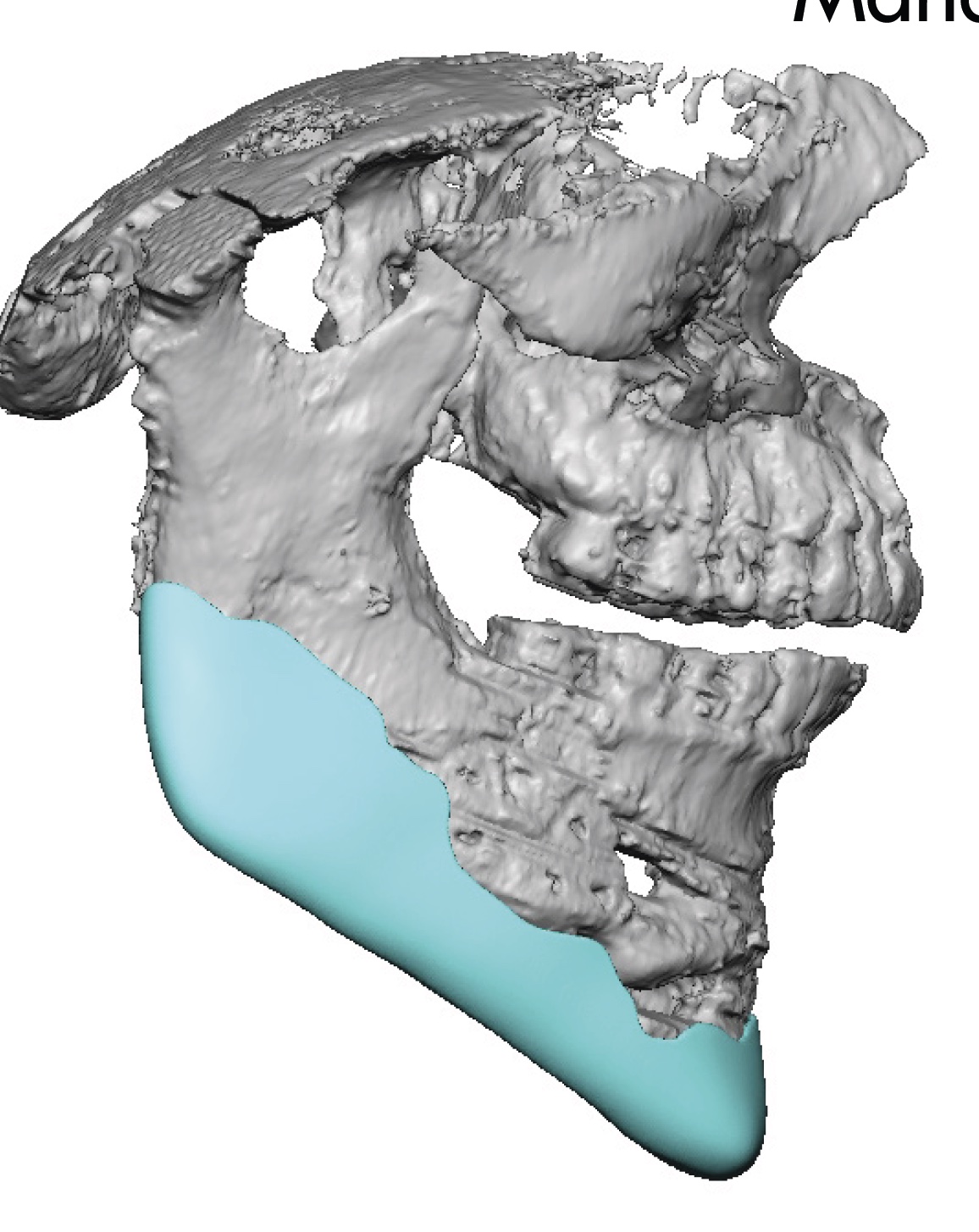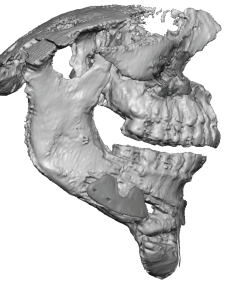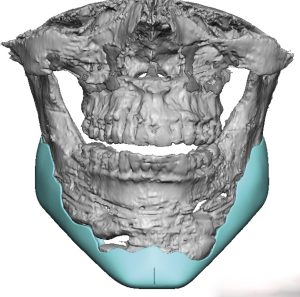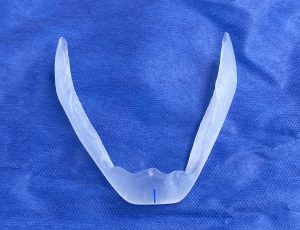Background: Changing the projection of the chin is the most common lower facial reshaping procedure. Most of these movements are done horizontally and one can debate the merits of an implant vs a bony genioplasty approach to do so. But when it comes to vertically lengthening the chin an implant has dimensional limitations. For significant vertical chin lengthening a bony genioplasty approach is needed with an interpositional graft to aid both stability and bony healing across the gap.
But one unique change to the lower jaw with a vertically lengthening of the chin is that there will be a disruption of the mandibular line along the inferior border. Regardless of the mandibular plane angle the inferior border (jaw) line will be disrupted with a downward tilt to the chin creating an obtuse angle. Whether that will be aesthetically problematic depends on how much vertical chin lengthening is done. In my experience chin lengthening under 10mms usually does not create an obvious jawline deformity for most patients.
But in ‘extreme’ cases of vertical chin lengthening the chin can potentially make the lower face look like it is a goatee with a large inverted step off. The only way to restore the shape of the jawline is with a custom jawline implant design that lengthens the jawline behind the chin. (Although it doesn’t require the same amount of vertical lengthening)
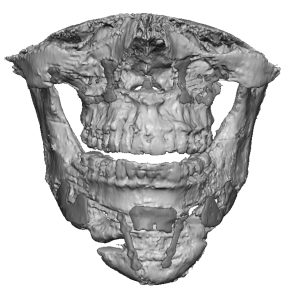

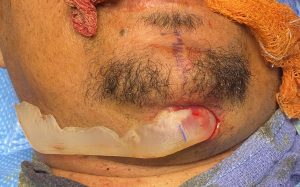
Vertical chin lengthening in many cases is done to bring a short chin down to create a more normal smoother mandibular plane line. But in other cases the amount of vertical chin lengthening takes it beyond the plane line, setting up the potential subsequent need for jawline lengthening behind it.
Case Highlights:
1) Significant vertical lengthening of the chin disrupts the mandibular plane line with a large chin angle disruption.
2) A custom jawline implant can be designed to restore a more normal shape to the lower jaw and a flat mandibular plane angle.
3) The custom jawline implant needs to wrap around the chin for added projection and shape and requires a submental incision to do so..
Dr. Barry Eppley
World-Renowned Plastic Surgeon

